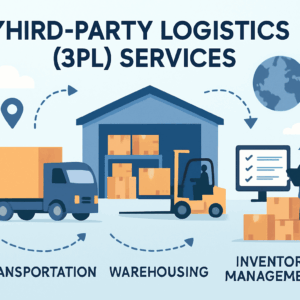How to Master Last-Mile Delivery Solutions in Malaysia: An Expert Guide for Small Business Owners
In the fast-paced world of e-commerce, last mile delivery Malaysia solutions have emerged as deal-breakers for small businesses looking to thrive. As digital transformation accelerates and customer expectations soar for everything from promptness to package tracking, mastering last-mile logistics is no longer just an advantage—it’s a necessity. Smart logistics can unlock growth, increase customer loyalty, and help small businesses compete with bigger brands in Malaysia’s dynamic marketplace.
This comprehensive how-to guide unpacks the evolving Malaysian courier ecosystem, explains operational challenges, and gives you actionable steps, case studies, and data-driven strategies to help you supercharge your last-mile delivery experience. Whether you’re an established online retailer or just starting out, this guide is tailored for small business owners who want to optimize operations and delight their customers.
Understanding Last-Mile Delivery: The Make-or-Break Phase for SMBs
The phrase “last mile” describes the crucial, final leg of a product’s journey—from a transportation hub or warehouse directly to the customer’s doorstep. Despite being the shortest distance in the supply chain, this stage is responsible for a disproportionate share of cost and complexity, accounting for as much as 41% of total logistics costs (Capgemini Research Institute). For small businesses, especially those in Malaysia’s diverse and sprawling urban-rural landscape, efficient last-mile delivery is pivotal to both profitability and brand reputation.
The Malaysian Context: What Makes Last-Mile Delivery Unique
- E-commerce is surging: Malaysian e-commerce revenue is projected to hit US$9.7 billion in 2024 (Statista).
- Mobile-first shoppers: With mobile penetration above 88%, Malaysians increasingly shop on their phones, expecting flexible delivery arrangements.
- High customer expectations: Research in 2023 revealed that 83% of local online buyers rate fast, reliable delivery as a “must-have” purchase factor.
- Geographical diversity: From urban Kuala Lumpur skyscrapers to remote Bornean villages, delivery requirements vary widely.
Small businesses must harness local context, customer demand, and innovative logistics to truly master last-mile delivery.
Key Players in the Malaysia Courier Ecosystem
Selecting the right courier service Malaysia partners is foundational to building a resilient last-mile logistics network. Each provider brings unique strengths and coverage areas.
Major Courier Providers: Who’s Who in Last-Mile Delivery
- Pos Malaysia
Malaysia’s largest and oldest postal service, with unmatched reach to rural and remote regions, and extensive parcel delivery network. However, standard delivery times may be slower in urban areas. - GDex, J&T Express, and Ninja Van
These regional players offer robust infrastructure, flexible shipping speeds, and competitive rates that cater especially well to e-commerce sellers. - Lalamove & GrabExpress
App-based, same-day delivery options specializing in urban centers and metropolitan areas. Their strength is instant, on-demand dispatch—perfect for perishables or urgent parcels. - DHL & FedEx
Trusted for reliability and international shipping, but often pricier for domestic last-mile needs. Useful for SMBs targeting cross-border e-commerce.
Example: Shopee and Ninja Van Partnership
Shopee, Malaysia’s top e-commerce platform, partners with Ninja Van for efficient same-day delivery options in Klang Valley. This collaboration provides sellers with a scalable, tech-driven last-mile solution, ensuring timely deliveries even during high-demand events like 11.11.
Real-World Anecdote: How Last-Mile Delivery Transformed Clara’s Café
When COVID-19 lockdowns shuttered foot traffic, Clara—a boutique cake café owner in Penang—needed to pivot fast or risk closing for good. She initially used standard parcel delivery networks, but frequent delays and melted products led to negative reviews. Switching to a local, app-based courier focused on same-day delivery options, Clara could guarantee that freshly baked cakes reached customers within two hours, in prime condition. Word spread via social media, and her café’s delivery orders jumped by 40% in just six months.
Key takeaway: The right last-mile partner isn’t just about logistics—it can redefine your entire business model and reputation.
Key Challenges for Last-Mile Delivery in Malaysia
Delivering a package from A to B is never as simple as it seems. Malaysian small businesses navigate a range of last-mile hurdles, including:
1. Urban Traffic Jams and Delivery Bottlenecks
Kuala Lumpur and other cities frequently experience massive traffic congestion. This can cause unpredictable delays, especially during peak hours when speeds can drop below 25 km/h (MIROS). For businesses reliant on prompt deliveries, these jams mean wasted time and unhappy customers.
Case Example: Beauty on Demand in KL
A beauty products retailer, Shades, started offering 4-hour delivery via Lalamove for city customers. By using motorbike couriers to bypass traffic more effectively, they cut failed deliveries by 25% and saw customer satisfaction scores improve.
2. Serving Rural and Island Populations
About 23% of Malaysians reside outside cities, with many homes spread across jungles, mountains, or islands like Langkawi and Penang. Deliveries to rural addresses may involve ferries, unpaved roads, or even foot transport—raising both cost and delivery uncertainty.
Case Example: Entrepreneurs in East Malaysia
Small agri-businesses in Sarawak leverage Pos Malaysia’s reach for non-perishables but partner with community-run delivery co-ops for urgent farm produce, synchronizing market harvest days with pick-ups to lower spoilage rates.
3. Spiraling Delivery Costs
The last mile is the costliest part of the fulfillment chain due to factors such as:
- High fuel and vehicle maintenance expenses
- Labor shortages, especially for drivers and riders
- “Failed delivery” costs (when recipients aren’t available)
These expenses can eat into already slim small business margins.
4. Technology Gaps and Inefficiency
Not all couriers operate with the latest routing, tracking, or order management technology—especially in less urbanized regions. Manual processes lead to misplaced orders, routing errors, and missed delivery windows.
Example: Paper-Based to Cloud-Driven
A small electronics retailer in Ipoh digitized its order and dispatch process, partnering only with couriers offering real-time parcel tracking. The result was a 60% reduction in “lost packages” and significant admin time saved.
Step-by-Step: How Small Businesses Can Optimize Last-Mile Delivery
1. Map Your Unique Delivery Profile
Before building partnerships, get granular about your specific needs:
- Delivery geography: Are you mostly urban, rural, or mixed?
- Product attributes: Are you shipping perishables, fragile goods, or bulky packages?
- Customer demands: What promises did you make on your site or marketplace—next-day, same-day, or standard delivery?
Example: DoubleTake Fashion’s Urban Focus
DoubleTake, a Kuala Lumpur-based apparel startup, mapped its customers and discovered 80% lived in Greater KL. By focusing same-day services on this urban cluster and using standard couriers elsewhere, they cut shipping costs by 15% and improved delivery reliability.
2. Evaluate and Test Multiple Courier Service Malaysia Partners
Don’t rely on one-size-fits-all logistics. Run comparison trials with:
- Pricing policies: Some bill by volume, others by distance or weight.
- Coverage area: Review city vs. rural network reach.
- Technology offering: Do they provide tracking, real-time updates, or integrated dashboards?
Example: Weekend Florist’s Courier Tests
The owner of a PJ-based florist tested three courier partners with identical bouquet orders. By analyzing speed, condition upon arrival, and customer feedback, she standardized partners for each zone—improving delivery success rates and repeat sales dramatically.
3. Use Same-Day Delivery Options to Delight Customers
Today’s buyers value immediacy. Nielsen Malaysia found 48% are willing to pay more for same-day delivery. On-demand services like Lalamove, GrabExpress, and MrSpeedy cater to short-distance, urban deliveries perfectly.
How to make this work:
- Use express delivery as a paid add-on or reward for returning or VIP customers.
- Offer guaranteed same-day slots for fast-moving or giftable products.
Case Study: Popcorn Pop! and Same-Day Sweets
Popcorn Pop!, a small snack producer in Selangor, introduced a “surprise gift” delivery within four hours for celebrations. They partnered with a motorbike courier, marketed it on social media, and saw their average order value jump by 22% during festive seasons.
4. Adopt a Multi-Courier Approach
A blended approach allows flexibility, cost control, and zone optimization:
- Standard courier for non-urgent, national shipments
- On-demand partners for city/same-day deliveries
- Niche providers for rural or remote locations
Example: The Johor Bakery’s Weekend Rush
A bakery in Johor Bahru partnered with J&T Express for regular parcels, Lalamove during weekend rushes, and Pos Malaysia for nationwide cake jars. Automated routing cut manual admin work by 70%.
5. Embrace Delivery Technology for Efficiency
Invest in scalable tools that synchronize with your logistics workflow:
- Inventory software that updates in real-time with courier pickups
- Route optimization apps to help drivers avoid traffic or reduce failed attempts
- Automated communication via WhatsApp, SMS, or email to notify customers of dispatch times, ETAs, and delivery completion
Example: E-Gadget’s Tracking Revolution
E-Gadget, a Penang seller, plugged their Shopify store into courier APIs, triggering instant SMS alerts at each shipment milestone. As a result, their “where is my order?” customer inquiries dropped by 40%.
6. Simplify Returns and Failed Attempt Handling
Returns are inevitable. Make them painless with:
- Clearly stated return policies
- Options for pickup or easy drop-off to designated hubs
- Integration with courier’s attempted delivery rescheduling or secure locker pickups
Example: Sungai Petani Stationery’s Smart Returns
This small office supply shop partners with CollectCo lockers and Pos Laju kiosks, allowing customers in remote towns to return items at their convenience, reducing first-attempt failure from 18% to just 7%.




